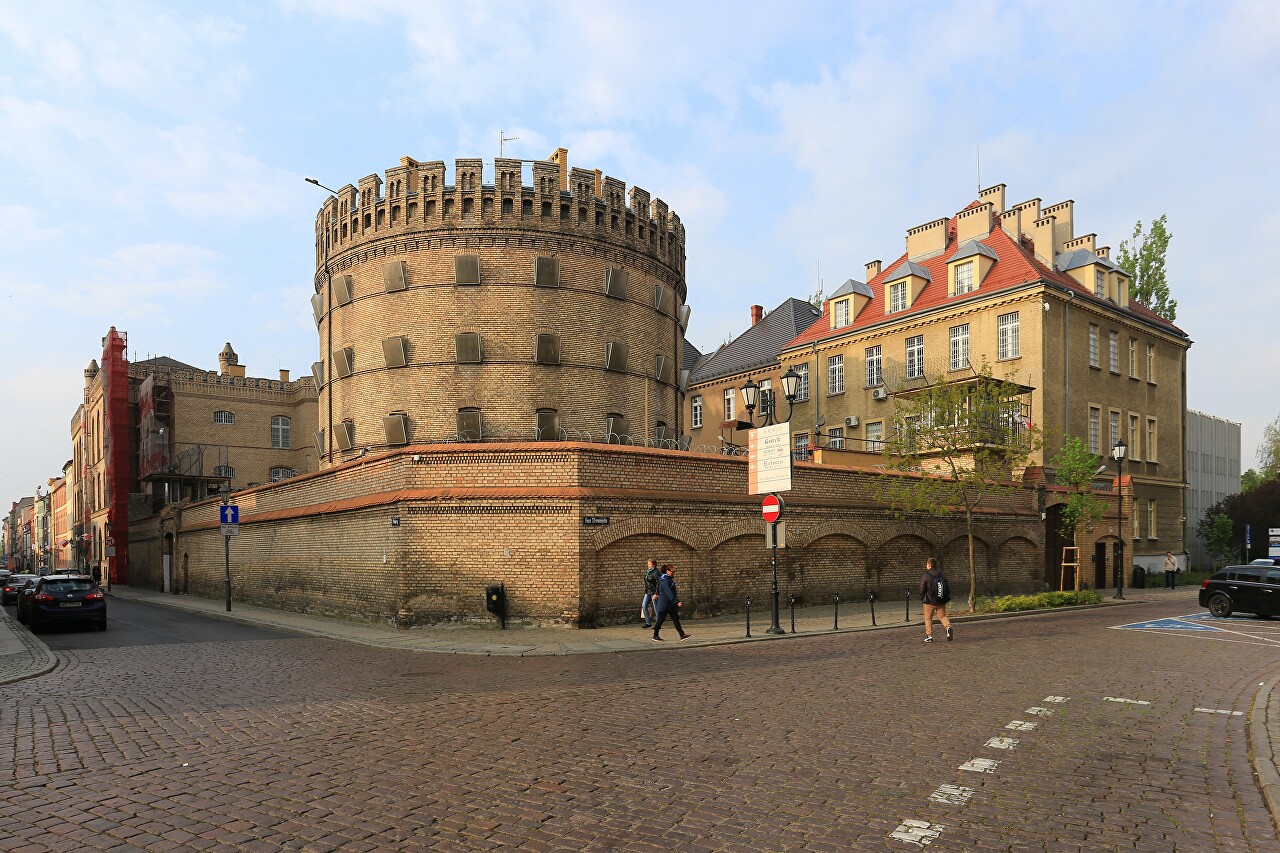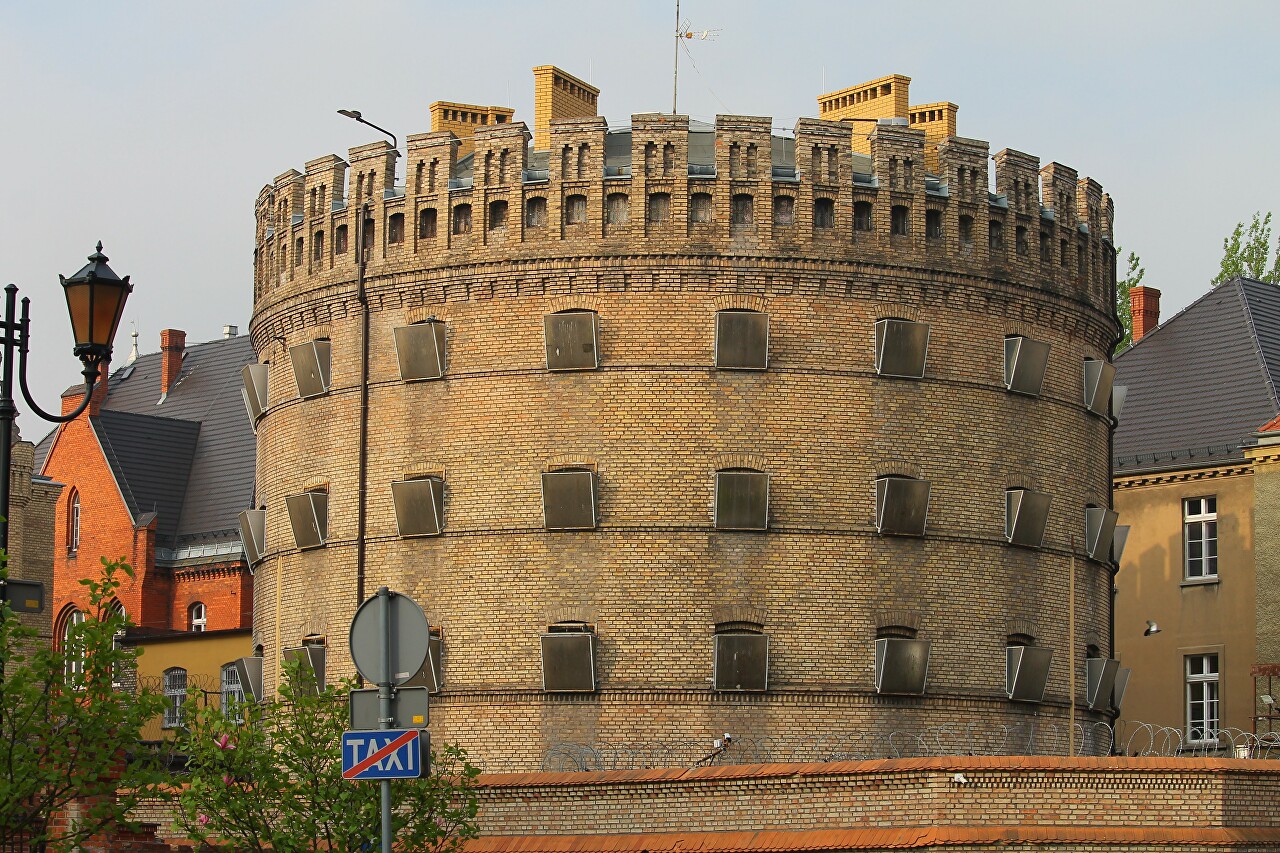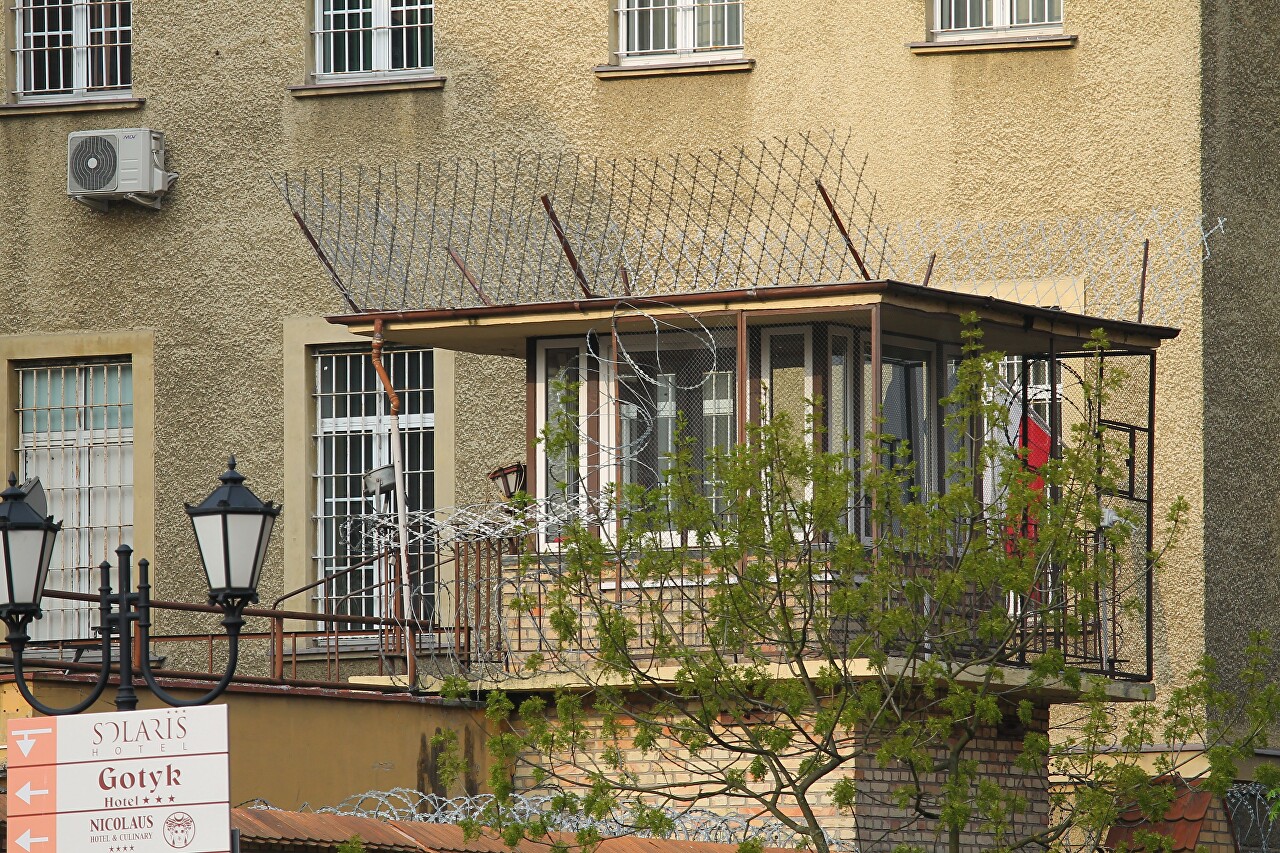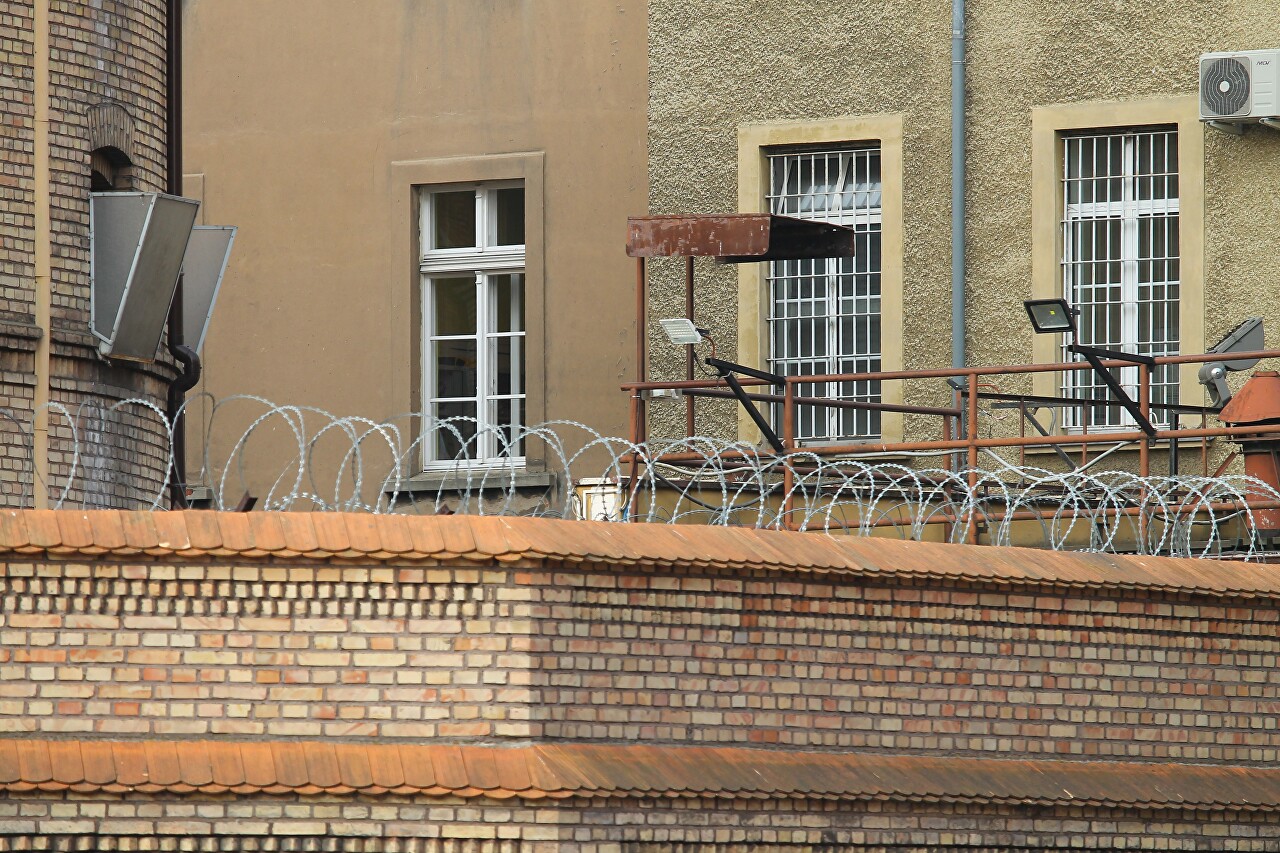Okrąglak Prison, Toruń
In 1787, the English lawyer and philosopher Jeremy Bentham published an article entitled "Panopticon or House of Supervision", in which he proposed the concept of an ideal prison building. The idea was that the guards were able to observe all the prisoners at the same time, without the prisoners being able to know that they were being watched. The word Panopticon was derived from the Greek words pan - "all" and opticos - "to see". The prison is a circular structure with multi-tiered galleries divided into cells. The cells had bars instead of internal walls. In the center of the building was a tower with security guards who watched the cameras through mirrored windows. Such a building will require much less security than traditional prisons with long corridors. This concept could also be used in workhouses, orphanages, hospitals, and schools. Bentham was unable to convince parliament and the king to implement his project, but his ideas did not disappear, and several prisons were built in different camps in the 19th and 20th centuries according to the principles of the Panopticon. One of these can be seen in Toruni, on Pekary Street next to the District Court building.

The prison was opened in 1866 and it is believed that it was built to contain participants in the January uprising of 1863. In fact, the decision to build it was made in 1853, but the project was delayed for almost a decade and a half. In 1859, the general plan of the prison was completed, the round tower was designed in 1864, and construction began at the same time. Design and construction works were supervised by master builder Kraps.

The building has a height of 20 meters and a diameter of 18 meters. The cells for prisoners occupied the top four tiers, each with 12 large cells with an area of 15 square meters and 8 small cells with an area of 7 square meters. In the center was a tower with a diameter of 6 meters with a staircase and observation platforms for supervisors. On the first floor there were service rooms. In the basement there were auxiliary rooms (kitchen, dining room, bath, laundry, storage rooms) and single cells. An administrative building, workshop and prison kitchen were built next to the prison, and the remains of a 13th-century defensive tower known as the "Cat's Tail" (Basza Koci Ogon) were discovered. The entire area was surrounded by a 3-meter-high wall. An underground corridor connects the prison and the courthouse. The prison is officially called Okrąglak (rotunda), but it is also popularly known as "Beczką" (barrel) or "Ul" (beehive).

For the first 10 years, the building served as the Kreisgericht prison. In 1879, the status was raised to national (Landgerichtliche Gefängnis), where especially dangerous criminals were kept and death sentences were carried out by hanging. In the Polish Republic of 1920-1939, there was an investigative and penal prison here, in 1935 the maximum number of prisoners reached 600. During the Second World War, it was a small prison. Until 1957, women were also imprisoned. In 1989-1993, a major renovation was carried out, which was preceded by archaeological work, during which the work of the object was suspended. As a result of the reconstruction, the cells were reduced in size, wooden floors were replaced with concrete, and many additional bars and gates equipped with electromagnetic protection were added. The facade was also cleaned and the outer wall was added. The building is listed in the municipal register of monuments.

The exterior, and especially the interior view of the building, of course, attracted cinematographers. Okrąglak prison can be seen in the following films: It's not too late (Jeszcze nie wieczór, Jacek Bławuta, 2008); "Panopticon" (Marcin Gładych, Krystian Wieczyński, 2012); "Hackers of Freedom" (Hakerzy Wolności, Marcin Gładych, 2011); Colorful Stockings (Kolorowych pończoch, Jerzy Passendorfer, 1960); The Year of the Quiet Sun (Roku spokojnego Słońca, Krzysztof Zanussi, 1984).